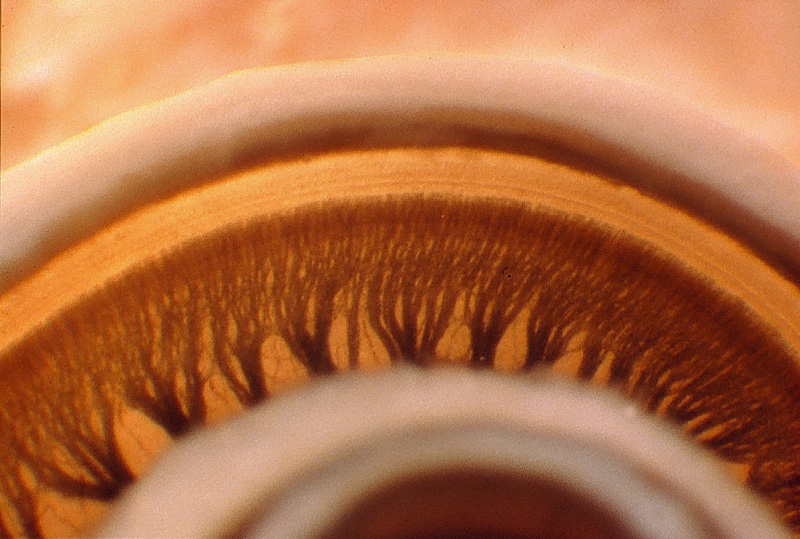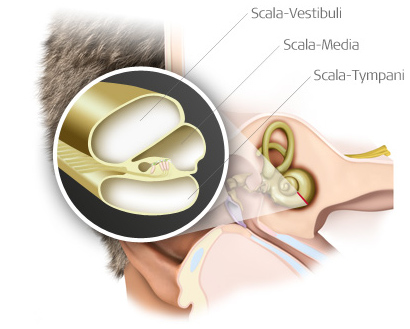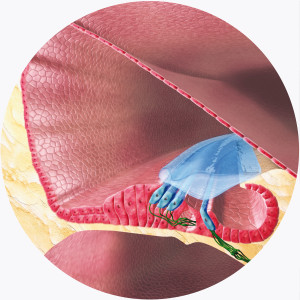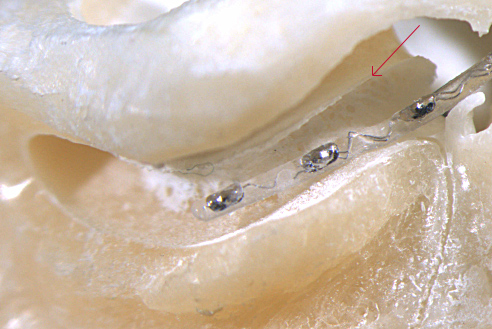MED-EL
Published May 17, 2018
Why Structure Preservation Of The Cochlea Is So Important

In previous posts we’ve shown a few pictures of the cochlea and MED-EL electrodes, but what’s the connection between the cochlea and flexible electrodes? There are a few different reasons why flexibility is so important, but today we’ll focus on just one of them: how delicate the cochlea is.
The whole cochlea is approximately the size of the pea. Within this volume are a few different and very important structures including the scala tympani, scala media, and scala vestibuli, as well as tens of thousands of tiny nerve cells.
The three scala are tubes that turn together to create the shell shape of the cochlea. Here’s a graphic to give some quick context as to where they’re located within the cochlea:
The scala vestibuli and scala tympani contain a fluid that conduct sound information into and through the cochlea. They are effectively one single structure: sound vibrations enter the cochlea through the scala tympani, travel all the way up to the apex, and then return back through the scala vestibuli. Along the way, they stimulate the nerve cells that send information to the brain where it is perceived as sound. MED-EL cochlear implant electrode arrays are designed to be inserted into the scala tympani, because the scala tympani is both more robust and closer to the nerve cells.
The scala media, located between the two, contains the nerve cells and provides structural stability within the cochlea to ensure that the nerve cells function most efficiently. It is physically separated from these by two membranes. The basilar membrane, which we’ll focus on today, separates the scala media from the scala tympani and acts as the base for the nerve cells.
This shows an even closer view within the cochlea. The scala vestibuli is on the top, the scala media in the middle, and the scala tympani on the bottom. See the basilar membrane, right in between the scala media and scala tympani? It’s this membrane, just a few cells thick, that keeps the balance between the different scala. Within the basilar membrane are all of the nerve cells that receive sound information and send it to the brain (the blue and green cells). Keeping this intact is called “structure preservation.”
But why is structure preservation so important? Imagine if the cochlea would be a guitar, then the basilar membrane is like the guitar strings. Any damage to the basilar membrane is like snapping a guitar string: once the string is snapped, it will never be able to vibrate the same way. And this damage can also affect the nerve cells, sometimes irreversibly affecting the ability to hear even after receiving a cochlear implant.
Finally, here’s a photo so that you can see how the CI electrode array fits right into the scala tympani. But what’s that thin ridge right above the electrode array, shown by the red arrow? That’s the basilar membrane.
The tip of this MED-EL CI electrode array is 0.5 mm in diameter, so you can see just how thin the basilar membrane is.
So, it’s clearly necessary to do everything possible to keep the basilar membrane intact. How can we do this? There are two parts to this: surgical technique, and electrode design. As we’ve shown before, MED-EL electrodes are designed to be especially soft and flexible. Through a special design incorporating wave-shaped wires we’ve been able to reduce the insertion force by 30% (as compared to straight wires), and the FLEX-Tip that comes with all electrode arrays in the FLEX series adds even more to this flexibility.
Want to find out more about MED-EL electrode arrays? Check out the full range here!
Find out how structure preservation can help you to hear your best.
MED-EL
Was this article helpful?
Thanks for your feedback.
Sign up for newsletter below for more.
Thanks for your feedback.
Please leave your message below.
Thanks for your message. We will reply as soon as possible.
Send us a message
Field is required
John Doe
Field is required
name@mail.com
Field is required
What do you think?
© MED-EL Medical Electronics. All rights reserved. The content on this website is for general informational purposes only and should not be taken as medical advice. Contact your doctor or hearing specialist to learn what type of hearing solution suits your specific needs. Not all products, features, or indications are approved in all countries.
MED-EL
.png)





